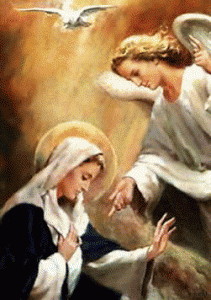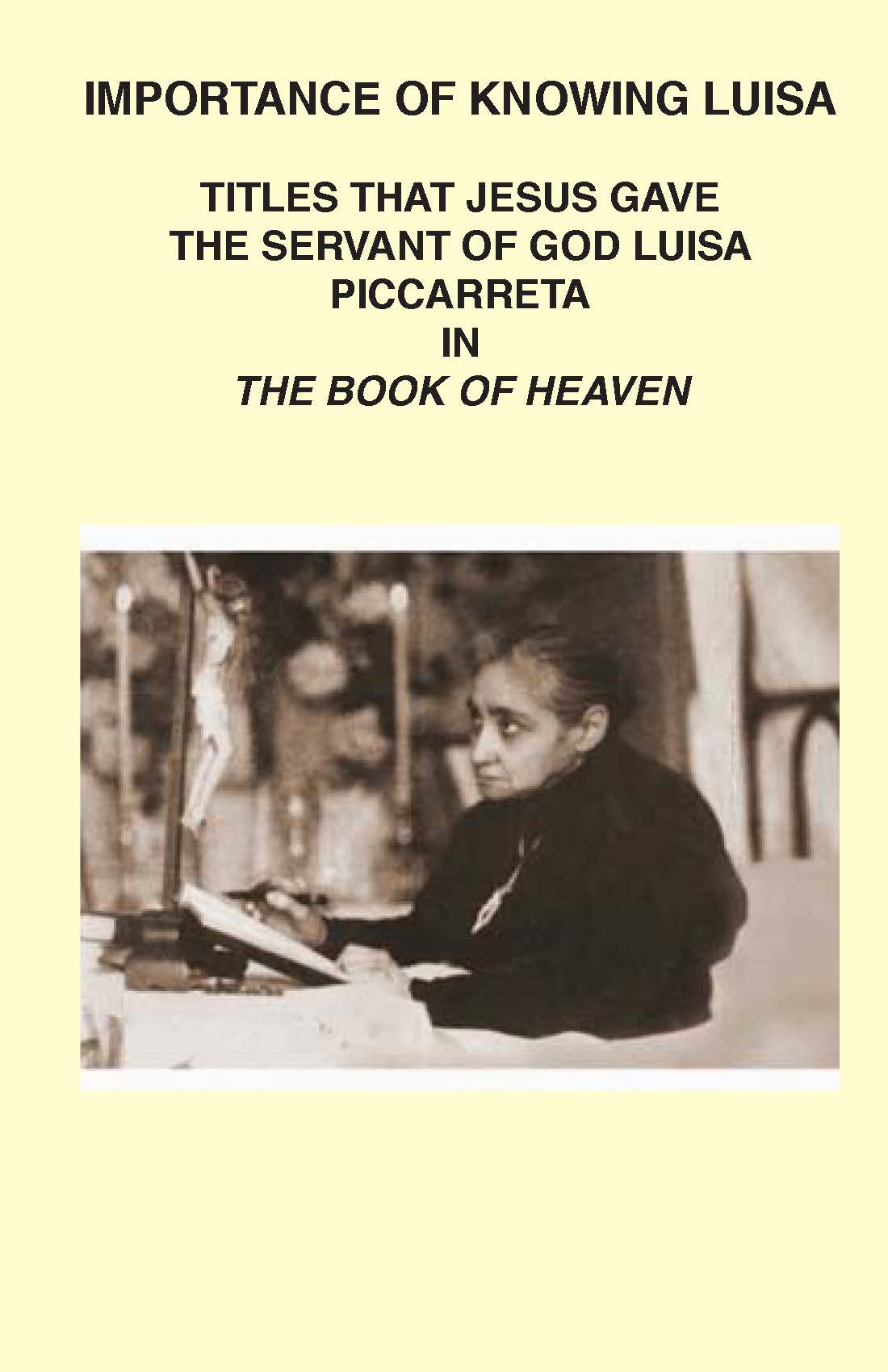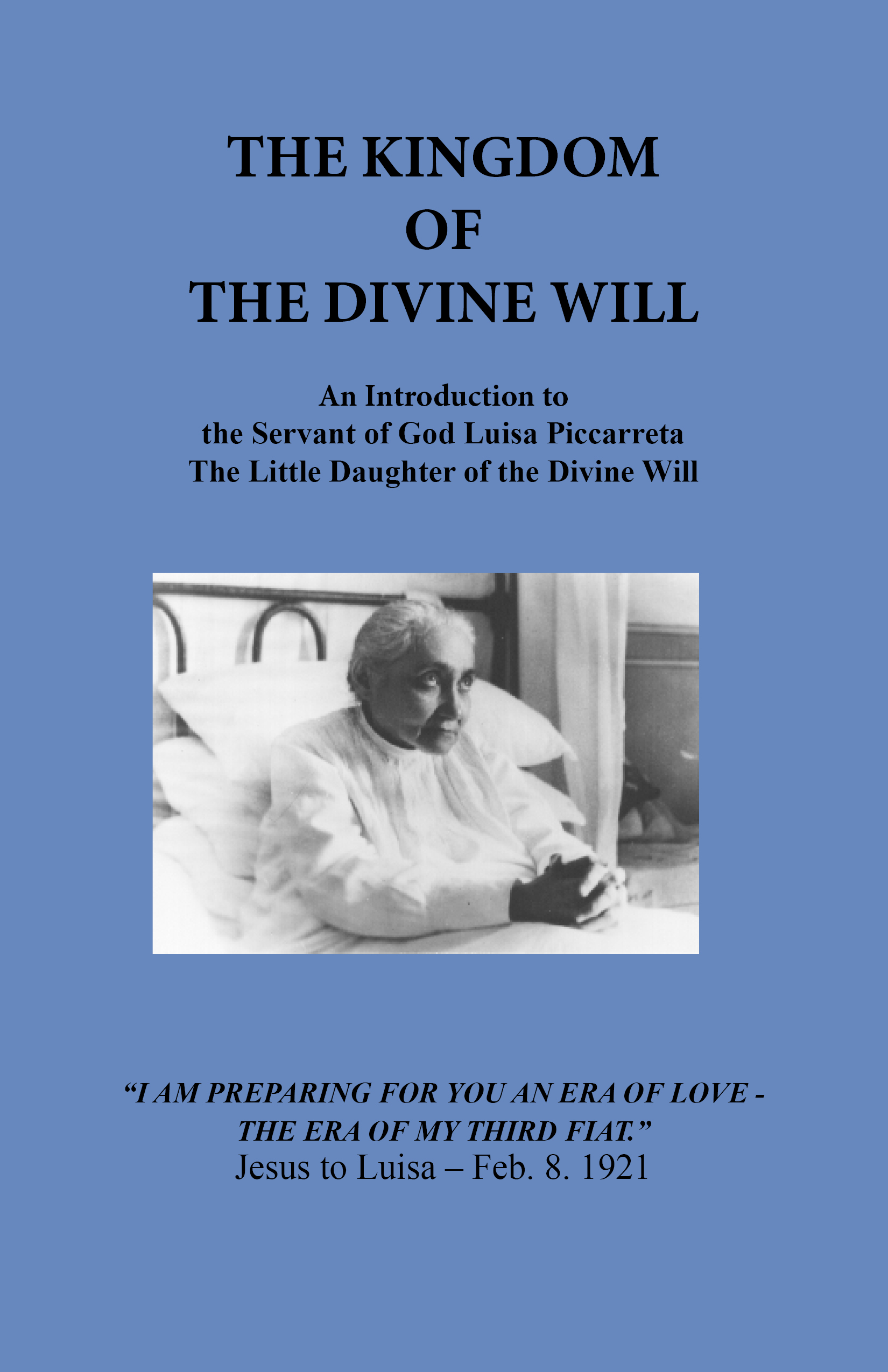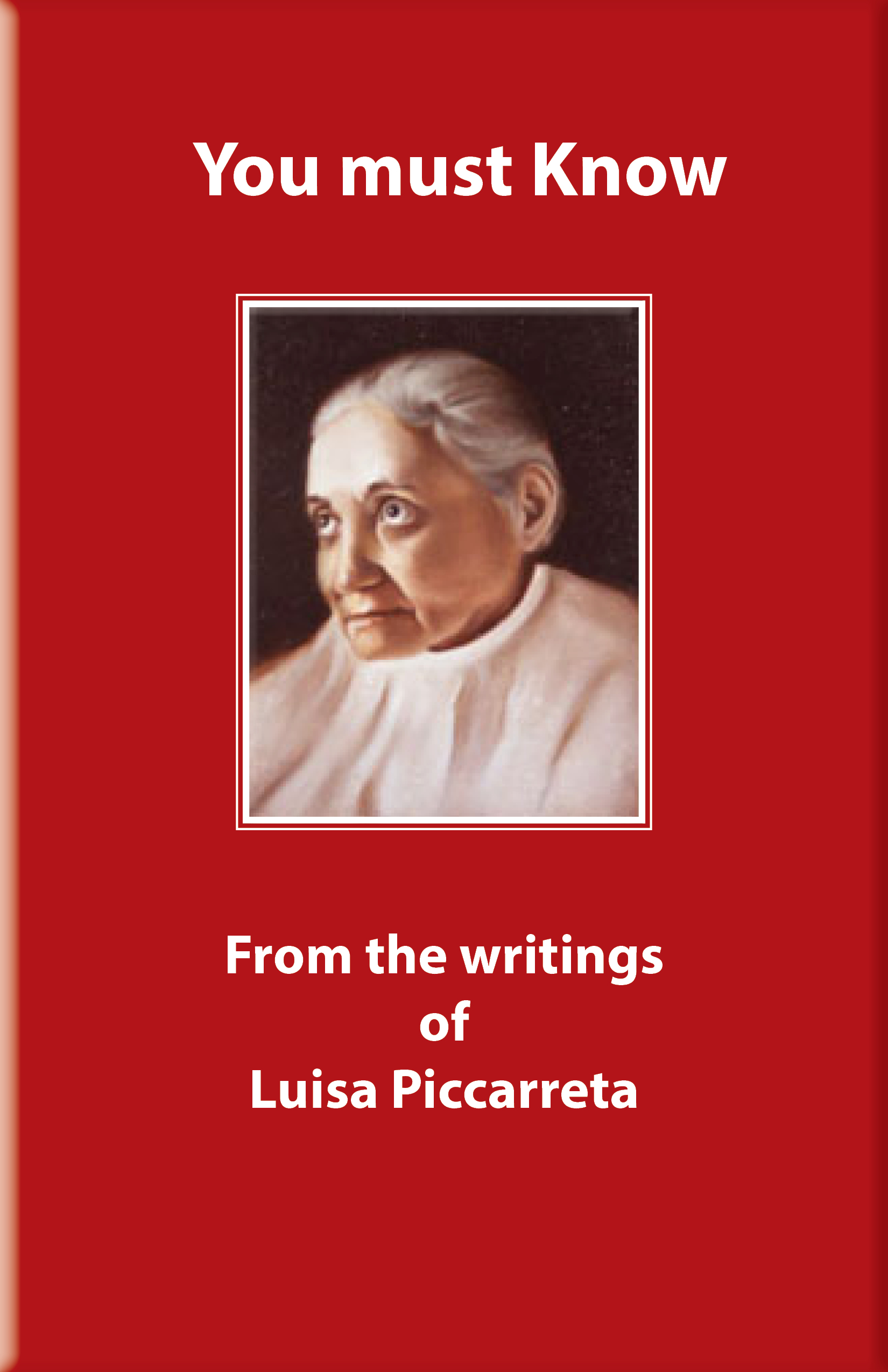Permanent link to this article: https://bookofheaven.org/2014/03/22/blessed-mother-teresa-on-gods-mercy-and-forgiveness/
Mar 21
Saint of the day: Enda of Aran – March 21
Saint of the day: Enda of Aran

The following comes from the CNA:
On March 21, four days after the feast day of Ireland‘s patron Saint Patrick, the Catholic Church honors Saint Enda of Aran, a warrior-turned-monk considered to be one of the founders of Irish monasticism.
Born during the fifth century, Enda inherited control of a large territory in present-day Northern Ireland from his father Conall. His sister Fanchea, however, had already embraced consecrated religious life with a community in Meath, and looked unfavorably on the battles and conquests of her brother.
Enda is said to have made a deal with his sister, promising to change his ways if he could marry one of the young women of her convent. But this was a ruse on Fanchea’s part, as the promised girl soon died. Fanchea forced him to view the girl’s corpse, to teach him that he, too, would face death and judgment.
In this way, Fanchea – whom the Church also remembers as a saint – succeeded in turning her brother not only from violence, but even from marriage. He left Ireland for several years, during which time he became a monk and was ordained as a priest.
Upon his return to Ireland, he petitioned his King Aengus of Munster – who was married to another of Enda’s sisters – to grant him land for a monastic settlement on the Aran Islands, a beautiful but austere location near Galway Bay off Ireland’s west coast.
During its early years, Enda’s island mission had around 150 monks. As the community grew, he divided up the territory between his disciples, who founded their own monasteries to accommodate the large number of vocations.
Enda did not found a religious order in the modern sense, but he did hold a position of authority and leadership over the monastic settlements of Aran – which became known as “Aran of the Saints,” renowned for the monks’ strict rule of life and passionate love for God.
While living on an Irish island, Enda’s monks imitated the asceticism and simplicity of the earliest Egytian desert hermits.
The monks of Aran lived alone in their stone cells, slept on the ground, ate together in silence, and survived by farming and fishing. St. Enda’s monastic rule, like those of St. Basil in the Greek East and St. Benedict in the Latin West, set aside many hours for prayer and the study of scripture.
During his own lifetime, Enda’s monastic settlement on the Aran islands became an important pilgrimage destination, as well as a center for the evangelizations of surrounding areas. At least two dozen canonized individuals had some association with “Aran of the Saints.”
St. Enda himself died in old age around the year 530. An early chronicler of his life declared that it would “never be known until the day of judgment, the number of saints whose bodies lie in the soil of Aran,” on account of the onetime-warrior’s response to God’s surprising call.
Permanent link to this article: https://bookofheaven.org/2014/03/21/saint-of-the-day-enda-of-aran-march-21/
Mar 21
A Prayer for Priests
A PRAYER FOR PRIESTS
Lord Jesus, present in the Most Blessed Sacrament,
and living perpetually among us through Your Priests,
grant that the words of Your Priests may be only Your words,
that their gestures be only Your gestures,
and that their lives be a true reflection of Your life.
Grant that they may be men who speak to God on behalf of His people,
and speak to His people of God.
Grant that they be courageous in service,
serving the Church as she asks to be served.
Grant that they may be men who witness to eternity in our time,
traveling on the paths of history in Your steps,
and doing good for all.
Grant that they may be faithful to their commitments,
zealous in their vocation and mission,
clear mirrors of their own identity,
and living the joy of the gift they have received.
We pray that Your Holy Mother, Mary,
present throughout Your life,
may be ever present in the life of Your Priests. Amen
Permanent link to this article: https://bookofheaven.org/2014/03/21/a-prayer-for-priests/
Mar 20
The Holy Spirit and Divine Life
Excerpts from:
Ioannes Paulus PP. II
DOMINUM ET VIVIFICANTEM
On the Holy Spirit in the Life of the Church
and the World
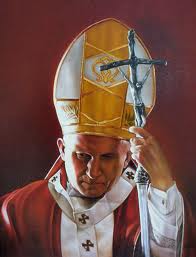 PART I – THE SPIRIT OF THE FATHER AND OF THE SON, GIVEN TO THE CHURCH
PART I – THE SPIRIT OF THE FATHER AND OF THE SON, GIVEN TO THE CHURCH
6. The Risen Christ Says: “Receive the Holy Spirit”
At the Jordan, Isaiah’s proclamation is given a concrete form: Jesus of Nazareth is the one who comes in the Holy Spirit and who brings the Spirit as the gift proper to his own Person, in order to distribute that gift by means of this humanity: “He will baptize you with the Holy Spirit.”76
Coming from the Father the Holy Spirit is sent by the Father.80 The Holy Spirit is first sent as a gift for the Son who was made man, in order to fulfill the messianic prophecies. After the “departure” of Christ the Son, the Johannine text says that the Holy Spirit “will come” directly (it is His new mission), to complete the work of the Son. Thus it will be He who brings to fulfillment the new era of the history of salvation.
The gift made by the Son completes the revelation and giving of the Eternal Love: the Holy Spirit, who in the inscrutable depths of the Divinity is a Person-Gift, through the work of the Son, that is to say by means of the Paschal Mystery, is given to the Apostles and to the Church in a new way, and through them is given to humanity and the whole world.
“A new heart I will give you, and a new spirit I will put within you,…My Spirit”83; and on the other hand he fulfills His own promise made to the Apostles with the words: “If I go, I will send him to you.”84 It is he: the Spirit of truth, the Paraclete sent by the Risen Christ to transform us into His Own Risen Image.85
PART III – THE SPIRIT WHO GIVES LIFE
“…the divine filiation planted in the human soul through sanctifying grace is the work of the Holy Spirit. “It is the Spirit himself bearing witness with our spirit that we are children of God, and if children, then heirs, heirs of God and fellow heirs with Christ.”215 Sanctifying grace is the principle and source of man’s new life: divine, supernatural life.
“… there is a supernatural “adoption,” of which the source is the Holy Spirit, love and gift. As such he is given to man. And in the superabundance of the uncreated gift there begins in the heart of all human beings that particular created gift whereby they “become partakers of the divine nature.”219
4. The Holy Spirit Strengthens the “Inner Man”
The hidden breath of the divine Spirit enables the human spirit to open in its turn before the saving and sanctifying self-opening of God. Through the gift of grace, which comes from the Holy Spirit, man enters a “new life,” is brought into the supernatural reality of the divine life itself and becomes a “dwelling-place of the Holy Spirit,” a living temple of God.253 For through the Holy Spirit, the Father and the Son come to him and take up their abode with him.254 In the communion of grace with the Trinity, man’s “living area” is broadened and raised up to the supernatural level of divine life. Man lives in God and by God: he lives “according to the Spirit,” and “sets his mind on the things of the Spirit.”
59. Man’s intimate relationship with God in the Holy Spirit also enables him to understand himself, his own humanity, in a new way. Thus that image and likeness of God which man is from his very beginning is fully realized.255
“…precisely by reason of this divine likeness which “shows that on earth man…is the only creature that God wishes for himself”…
(Vatican II adds that the Church is “a sacrament. . . of the unity of all mankind. “Obviously it is a question of the unity which the human race which in itself is differentiated in various ways-has from God and in God. This unity has its roots in the mystery of creation and acquires a new dimension in the mystery of the Redemption, which is ordered to universal salvation. Since God “wishes all men to be saved and to come to the knowledge of the truth,”279 the Redemption includes all humanity and in a certain way all of creation. In the same universal dimension of Redemption the Holy Spirit is acting, by virtue of the “departure of Christ.” Therefore the Church, rooted through her own mystery in the Trinitarian plan of salvation with good reason regards herself as the “sacrament of the unity of the whole human race.” She knows that she is such through the power of the Holy Spirit, of which power she is a sign and instrument in the fulfillment of God’s salvific plan.)
The Holy Spirit is the gift that comes into man’s heart together with prayer. … the Holy Spirit not only enables us to pray, but guides us “from within” in prayer: He is present in our prayer and gives it a divine dimension.283 Thus “he who searches the hearts of men knows what is the mind of the Spirit, because the Spirit intercedes for the saints according to the Will of God.” 284 Prayer through the power of the Holy Spirit becomes the ever more mature expression of the new man, who by means of this prayer participates in the divine life.
6. The Spirit and the Bride Say: “Come!”
It is the eschatological hope, the hope of definitive fulfillment in God, the hope of the Eternal Kingdom, that is brought about by participation in the life of the Trinity. The Holy Spirit, given to the Apostles as the Counselor, is the guardian and animator of this hope in the heart of the Church. …
CONCLUSION
“…she (the Church) implores the joy and consolation that only He (the Holy Spirit), the true Counselor, can bring by coming down into people’s inmost hearts295; the Church implores the grace of the virtues that merit heavenly glory, implores eternal salvation, in the full communication of the divine life, to which the Father has eternally “predestined” human beings, created through love in the image and likeness of the Most Holy Trinity.
Permanent link to this article: https://bookofheaven.org/2014/03/20/the-holy-spirit-and-divine-life/
Mar 19
Our Divinization: O What a Deal!
Our Divinization: O What a Deal!
click title for more information
Posted on January 4, 2014 by Padre
It turned a few heads at Mass on Christmas Day when in my homily, among other things, I reiterated a line of Christology dating back to the Fathers of the Church, often formulated as: “God became man, that man might become God.”
Man becoming God? Really? To many ears in the congregation, it probably sounded like a throwback to the New Age movement.
That just goes to show that this truth is as startling today as it was back in the day of Irenaeus, or Athanasius or Leo the Great.
At First Vespers for the Solemnity of Mary the Mother of God on January 1st, the Church prays this antiphon that dates back to the fifth century A.D.:
O marvelous exchange! Man’s Creator has become man, born of the Virgin. We have been made sharers in the divinity of Christ who humbled himself to share our humanity.
O marvelous exchange! In Latin, it’s O Admirabile Commercium, which in later centuries was beautifully transformed into a five-part motet by Palestrina.
The late theologian Franz Josef van Beeck observes that the antiphon “alludes to the condemnation, at the first Council of Constantinople (AD 381) of Apollinarius’ denial of Christs’ human soul…[and] the strong emphasis on Mary and her virginity strengthens the impression that the Latin text goes back to a Greek original composed shortly after the Council of Ephesus” (God Encountered, Vol. 1, 87).
The antiphon is echoed in the prayer which the priest says quietly as he prepares the gifts at the altar at the offertory of the Mass: “By the mystery of this water and wine may we come to share in the Divinity of Christ who humbled Himself to share in our humanity.”
The “marvelous exchange” here referred to is something that would send the Fathers of the Church practically into ecstasy—and it should have the same effect on us.
It’s a truth that made St. Leo the Great famously exclaim, “O, Christian, remember your dignity, and now that you share in God’s Own Nature, do not return by sin to your former base condition.” And says the great St. Athanasius:
[God] gave Himself to us through His Spirit. By the participation of the Spirit, we become communicants in the Divine Nature. . . . For this reason, those in whom the Spirit dwells are Divinized.
Divinized.
Yes, but not in some New Age sense. The truth, rather, is that in Jesus, divine nature and human nature have been intimately brought together; and this has cosmic consequences for us: it means we can come to share in God’s Own Divinity.
And ‘O Marvelous Exchange’ has been a way of expressing our excitement about that for nearly sixteen hundred years. It’s an expression that historically emerges from a context in which goods were exchanged by means of a bartering system; ‘commercium’ is the root of our English word ‘commerce.’ Today, we might say, in more earthy language, “O What a Deal!” God becomes man, so that we can become God-like!
As Catechism 460 puts it quoting both Irenaeus and Athanasius:
The Word became flesh to make us “partakers of the divine nature” (Cf. II Peter 1:4): “For this is why the Word became man, and the Son of God became the Son of man: so that man, by entering into communion with the Word and thus receiving divine sonship, might become a son of God” (Irenaeus, Adversus haereses 3.19.1). “For the Son of God became man so that we might become God” (Athanasius, De Incarnatione, 54.3).
And even St. Thomas Aquinas does not shrink from an audacious formulation: “The only-begotten Son of God, wanting to make us sharers in His Divinity, assumed our nature, so that He, made man, might make men gods.” He goes on to teach that the foretaste of this divinization in our present state is the experience of sanctifying grace in our lives which is itself, he explains, “nothing other than a kind of shared impression of the Divine Nature” upon us.
The Incarnation of the Son of God does not only mean that God becomes humanly present, in the flesh, in Jesus of Nazareth, but that he gives us a Divine calling at our own creation, and a capacitation through Baptism, one day, to attain a destiny that far exceeds the possibilities of human nature considered in itself. In Heaven, we will be fully who we were meant to be from all Eternity, daughters and sons of God living in intimacy with Father, Son, and Holy Spirit and in the joyful company of all the elect in the bliss of Heavenly Union for all Eternity—that is our “divinization.” And that is at the heart of the Good News about Jesus, and Christmas. O, what a deal!
Imagine what 2014 could be like… if we really let this truth sink in.
Fr. Thomas Berg
Professor of Moral Theology
Saint Joseph’s Seminary
Archdiocese of New York
Permanent link to this article: https://bookofheaven.org/2014/03/19/our-divinization-o-what-a-deal/
Permanent link to this article: https://bookofheaven.org/2014/03/18/feast-of-saint-joseph-march-19/
Mar 17
Lent and the Communion of Saints
Lent and the Communion of Saints
Permanent link to this article: https://bookofheaven.org/2014/03/17/2797/
Mar 16
Feast of Saint Patrick – March 17
FEAST DAY OF SAINT PATRICK
March 17
click image for much more information about St. Patrick
The beautiful prayer of St. Patrick, popularly known as “St. Patrick’s Breast-Plate”, is supposed to have been composed by him in preparation for this victory over Paganism. The following is a literal translation from the old Irish text:
I bind to myself today
The strong virtue of the Invocation of the Trinity:
I believe the Trinity in the Unity
The Creator of the Universe.
I bind to myself today
The virtue of the Incarnation of Christ with His Baptism,
The virtue of His crucifixion with His burial,
The virtue of His Resurrection with His Ascension,
The virtue of His coming on the Judgement Day.
I bind to myself today
The virtue of the love of seraphim,
In the obedience of angels,
In the hope of resurrection unto reward,
In prayers of Patriarchs,
In predictions of Prophets,
In preaching of Apostles,
In faith of Confessors,
In purity of holy Virgins,
In deeds of righteous men.
I bind to myself today
The power of Heaven,
The light of the sun,
The brightness of the moon,
The splendour of fire,
The flashing of lightning,
The swiftness of wind,
The depth of sea,
The stability of earth,
The compactness of rocks.
I bind to myself today
God’s Power to guide me,
God’s Might to uphold me,
God’s Wisdom to teach me,
God’s Eye to watch over me,
God’s Ear to hear me,
God’s Word to give me speech,
God’s Hand to guide me,
God’s Way to lie before me,
God’s Shield to shelter me,
God’s Host to secure me,
Against the snares of demons,
Against the seductions of vices,
Against the lusts of nature,
Against everyone who meditates injury to me,
Whether far or near,
Whether few or with many.
I invoke today all these virtues
Against every hostile merciless power
Which may assail my body and my soul,
Against the incantations of false prophets,
Against the black laws of heathenism,
Against the false laws of heresy,
Against the deceits of idolatry,
Against the spells of women, and smiths, and druids,
Against every knowledge that binds the soul of man.
Christ, protect me today
Against every poison, against burning,
Against drowning, against death-wound,
That I may receive abundant reward.
Christ with me, Christ before me,
Christ behind me, Christ within me,
Christ beneath me, Christ above me,
Christ at my right, Christ at my left,
Christ in the fort,
Christ in the chariot seat,
Christ in the poop [deck],
Christ in the heart of everyone who thinks of me,
Christ in the mouth of everyone who speaks to me,
Christ in every eye that sees me,
Christ in every ear that hears me.
I bind to myself today
The strong virtue of an invocation of the Trinity,
I believe the Trinity in the Unity
The Creator of the Universe.
Permanent link to this article: https://bookofheaven.org/2014/03/16/feast-of-saint-patrick-march-17/
Mar 15
Church Teaching on Mary’s Cooperation in the Redemption of Mankind
Church Teaching on Mary’s Cooperation in the Redemption of Mankind
1. Leo XIII, Encyclical, Iucunda Semper, Sept 8, 1884. ASS 27. 178.
For when she presented herself to God as a handmaid for the role of Mother, or when she totally dedicated herself with her Son in the temple, from each of these she was already then a sharer in the laborious expiation for the human race. Hence we cannot doubt that she greatly grieved in soul in the most harsh anguishes and torments of her Son. Further, that divine sacrifice had to be completed with her present and looking on, for which she had generously nourished the victim from herself. Finally this is more tearfully observed in the same mysteries: There stood by the Cross of Jesus, Mary His Mother … of her own accord she offered her Son to the divine justice, dying with Him in her heart, transfixed with the sword of sorrow.
2. Leo XIII, Encyclical, Adiutricem populi, Sept. 5, 1895. ASS 28. 130-31.
For thereafter, by the divine plan, she so began to watch over the Church, so to be present to us and to favor us as Mother, that she who had been the minister of accomplishing the mystery of human redemption, would be likewise the minister of the dispensation of that grace, practically limitless power being given to her.
3. St. Pius X, Encyclical, Ad diem illum, Feb. 2, 1904, ASS 36. 453-55.
Hence that never disassociated manner of life and labors…. But when the final hour of her Son came, His Mother stood by the cross of Jesus, not just occupied in seeing the dread spectacle, but actually rejoicing that her Only-Begotten was being offered for the salvation of the human race. … from this common sharing of sufferings and will, she merited to become most worthily the reparatrix of the lost world, and so the dispensatrix of all the gifts which were gained for us by the death and blood of Jesus. … She … since she was ahead of all in holiness and union with Christ, and was taken up by Christ into the work of human salvation, she merited congruously, as they say, what Christ merited condignly, and is the chief minister of the dispensation of graces.
4. Benedict XV, Epistle, Admodum probatur, June 20, 1917. AAS 10. 182.
With her suffering and dying Son she suffered and almost died, so did she surrender her mother’s rights over her Son for the salvation of human beings, and to appease the justice of God, so far as pertained to her, she immolated her Son, so that it can be rightly said, that she together with Christ has redeemed the human race.
5. Pius XI, Apostolic Letter, Explorata res est. Feb. 2, 1923. AAS 15. 104.
… the sorrowful Virgin shared in the work of redemption with Jesus Christ…. COMMENT: The word “sorrowful” shows this was a cooperation on Calvary, not just in the annunciation.
6. Pius XI, Encyclical, Miserentissimus Redemptor, May 8, 1928. AAS 20. 178.
May the kindly Virgin Mother of God be present and smile on these our prayers and undertakings, who, since she brought forth Jesus the Redeemer, fed Him, offered Him as a victim at the cross, by her hidden union with Christ, and an altogether singular grace from Him, was likewise the Reparatrix, and is devoutly called that.
7. Pius XI, Radiomessage to Lourdes, April 28, 1935. Osservatore Romano, April 29, 1935.
O Mother of piety and mercy, who as Coredemptrix stood by your most sweet Son suffering with Him when He consummated the redemption of the human race on the altar of the cross … preserve in us, we beg, day by day, the precious fruits of the Redemption and of your compassion.
8. Pius XII, Encyclical, On the Mystical Body, June 29, 1943. AAS 35. 247.
She it was who, as the New Eve, free from every stain of original or personal sin, always most closely joined with her Son, offered Him to the Eternal Father together with the holocaust of her motherly rights and motherly love, for all the sons of Adam, defiled by his miserable fall.
9. Pius XII, Radiomessage to Fatima, May13, 1946, AAS 38. 266.
Jesus is King of the Eternal Ages by nature and by right of conquest; through Him, with Him, and subordinate to Him, Mary is Queen by grace, by divine relationship, by right of conquest, and by singular choice [of the Father].
COMMENT: The same title by right of conquest, is given for both Jesus and Mary. A triple subordination is carefully expressed, therefore there should be no other reservation thought to be understood. Hence, with subordination, the title applies in the same way to each.
10. Pius XII, Apostolic Constitution, Munificentissimus Deus, Nov. 1, 1950. AAS 42. 768.
We must especially remember this, that starting in the second century, the Virgin Mary is presented by the holy Fathers as the New Eve, who, although subject to the New Adam, was most closely joined with Him in that struggle against the infernal enemy , which, as was foretold in the Protoevangelium, was to come to the most full victory over sin and death, which are always joined together in the writings of the Apostle of the Gentiles. Hence, just as the glorious resurrection of Christ was an essential part and final sign of this victory, so that struggle of the Blessed Virgin in common with her Son, had to be closed by the glorification of her virginal body.”
COMMENT: In spite of the fears of some scholars, such as Altaner, the Pope found the Assumption in the sources of revelation in the New Eve theme, and more precisely, in her cooperation on Calvary, which was most close, to such an extent that the Pope even could speak of a struggle that was “common to the Blessed Virgin and her Son”.
11. Pius XII, Encyclical, Fulgens corona, Sept. 8, 1953. AAS 45. 583.
… she was joined with her Only-begotten Son in the struggle against the most wicked infernal serpent.
12. Pius XII, Encyclical, Ad Caeli Reginam, Oct. 11, 1954. AAS 46. 634-35.
In accomplishing this work of the redemption, the Most Blessed Virgin Mary was certainly closely joined with Christ … was associated with Jesus Christ, the very principle of salvation, by divine plan, and indeed in a way similar to that in which Eve was associated with Adam, the principle of death, so that we can say that the work of our salvation was accomplished according to a certain recapitulation … and if she was joined with her Son, even on Golgotha, [and] she offered Him, together with the holocaust of her Mother’s rights and love, like a New Eve, for all the sons of Adam, defiled by his wretched fall, as a result, beyond doubt, it is right to conclude that just as Christ, the New Adam should be called King not only because He is the Son of God, but also because He is our Redeemer, so by a certain analogy, the most Blessed Virgin is Queen, not only because she is the Mother of God, but also because as the New Eve she was associated with the New Adam
COMMENT: Mary acted in a way parallel to that of Eve, who did not receive a sin from Adam [as the German Mariology would imply] but in an effective and active way generated sin. Therefore Mary’s work was not active receptivity , as the Germans assert, but an effective and active cooperation in generating the title for the Redemption.
13. John XXIII, Radiomessage to Eucharistic Congress of Italy at Catana, Sept. 13, 1959. AAS 51. 714.
We trust that they will imitate in her the most perfect model of union with Jesus, our Head; we trust that they will join Mary in the offering of the divine Victim….
14. John XXIII, Homily for the Canonization of St. Peter Julian Eymard. Dec. 9, 1962. AAS 65. 10.
Intimately associated in the Redemption in the eternal plans of the Most High, Our Lady, as Severianus of Gabala sang, is the mother of salvation, the fountain of light made visible.
15. Vatican II, Constitution on the Church, #58, #61.
So also the Blessed Virgin advance in her pilgrimage of faith, and faithfully bore with her union with her Son even to the cross, where, in accord with the divine plan, she stood, vehemently grieved with her Only-Begotten, and joined herself to His Sacrifice with a motherly heart, lovingly consenting to the immolation of the victim born of her.
In conceiving Christ, in giving birth to Him, in feeding Him, in presenting Him to the Father in the Temple, in suffering with Him, as He died on the cross, she cooperated in the work of the Savior in an altogether singular way, by obedience, faith, hope and burning love, to restore supernatural life to souls.
COMMENT: Her cooperation was by way of obedience, which was the covenant condition. She cooperated officially “in accord with the divine plan”: as the New Eve. She was made interiorly apt for this by the Immaculate Conception. Such a cooperation is clearly active, in generating the title for redemption.
16. John Paul II. Encyclical, Redemptoris Mater, March 25, 1987. AAS 79. 382. 83. Vatican Press Translation.
How great, how heroic then is the obedience of faith shown by Mary in the face of God’s ‘unsearchable judgments’! How completely she ‘abandons herself to God without reserve, ‘offering the full assent of the intellect and the will’ to him whose ‘ways are inscrutable…. Through this faith Mary is perfectly united with Christ in his self- emptying…. At the foot of the Cross Mary shares through faith in the shocking mystery of this self-emptying. This is perhaps the deepest ‘kenosis’of faith in human history. Through faith the Mother shares in the death of her Son, in his redeeming death…. as a sharing in the sacrifice of Christ–the new Adam–it becomes in a certain sense the counterpoise to the disobedience and disbelief embodied in the sin of our first parents. Thus teach the Fathers of the Church and especially St. Irenaeus, quoted by the Constitution Lumen gentium: ‘The knot of Eve’s disobedience was untied by Mary’s obedience; what the virgin Eve bound through her unbelief, the Virgin Mary loosened by her faith.’
COMMENT: In his Apostolic Exhortation Redemptoris Custos, the same Pope said that in Redemptoris Mater, he intended to deepen the teaching of Vatican II on Mary’s faith.
17. John Paul II, Allocution at the Sanctuary of Our Lady of Guayaquil, given on Jan 31, 1985, reported in L’Osservatore Romano Supplement of Feb. 2, 1985 and in English L’Osservatore Romano, March 11, 1985, p. 7.
Crucified spiritually with her crucified Son (cf. Gal 2:20), she contemplated with heroic love the death of her God, she ‘lovingly consented to the immolation of this Victim which she herself had brought forth’ (Lumen gentium #58) … as she was in a special way close to the Cross of her Son, she also had to have a privileged experience of his Resurrection. In fact, Mary’s role as co-redemptrix did not cease with the glorification of her Son.
Compiled by Father William G. Most
Electronic text (c) Copyright EWTN 1996. All rights reserved.
Permanent link to this article: https://bookofheaven.org/2014/03/15/church-teaching-on-marys-cooperation-in-the-redemption-of-mankind/
Mar 15
Our participation in the subjective redemption
Our participation in the subjective redemption
by Fr William G Most
The Mass is the center of all In the Mass, the essential participation is interior To answer the prayers etc is good, but if the interior is not added, God will say again what He said through Isaiah 29:13: “This people honors me with their lips, but their heart is far from me.” The interior participation of the people lies in two things, according to Pius XII, “Mediator Dei:” 1) The people offer inasmuch as the priest who acts “in persona Christi” thus also represents them, who are Christ’s members; 2) They should unite their interior dispositions to His, especially their obedience to the will of the Father in acting, and in accepting the hardships that come with their daily life Vatican II, Lumen gentium par 34, calls these things “spiritual sacrifices.”
Everything but sin can be turned into gold for eternity as a share in the sufferings of Christ Romans 8:28: “For those who love God, all things work together for good.” Even worry can be made part of this, for Christ worried all His life long His human soul saw the vision of God from conception, and it showed Him everything He had to suffer That was, as it were, eating away at Him, and He let us see inside in Lk 12:50 and John 12:27.
If we love Him, we will want to make reparation for offenses committed against Him by ourselves and by others.
Permanent link to this article: https://bookofheaven.org/2014/03/15/our-participation-in-the-subjective-redemption/




